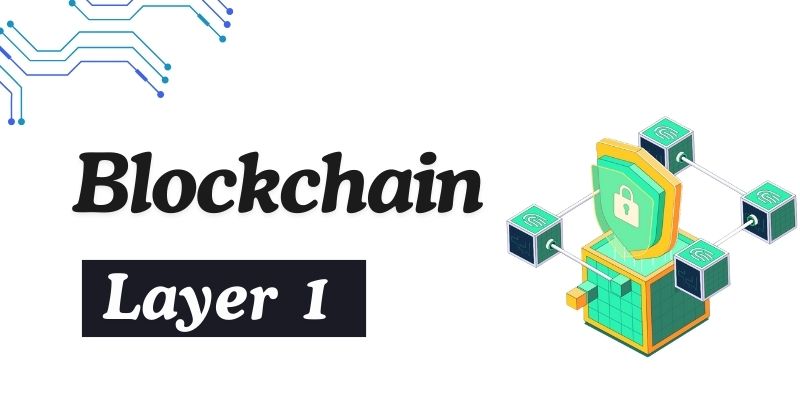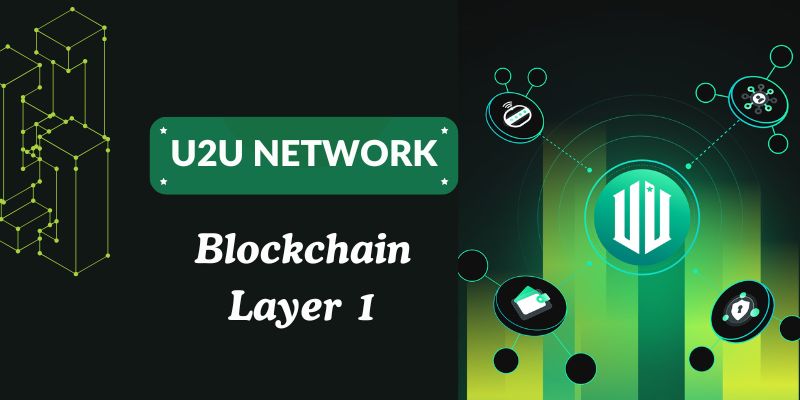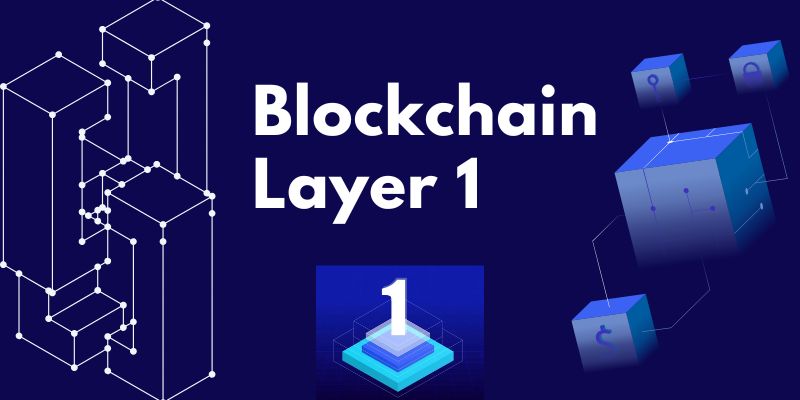Blockchain technology has undeniably transformed digital ecosystems, but the evolution of Layer 1 blockchains in 2025 presents a fascinating paradox. While these platforms serve as the foundational layer for decentralized systems, they are now more than mere enablers—they are battlegrounds where scalability, security, and usability intersect with market forces and human imagination. Understanding their dynamics requires more than a surface-level analysis; it demands a closer look at the nuanced factors shaping their trajectory.
The Rise of Layer 1: Beyond Infrastructure
Initially envisioned as decentralized ledgers, Layer 1 blockchains have transcended their original roles, evolving from simple digital record-keepers into dynamic, multifaceted ecosystems that catalyze innovation across various sectors such as finance, gaming, supply chain, and identity verification. As we look towards 2025, it is clear that Layer 1 blockchains are undergoing a transformation similar to that of traditional operating systems, where adaptability and support for diverse applications become critical.
Ethereum stands out as a prime example of this evolution. It has grown beyond its foundational blockchain functionality to become a robust platform that supports decentralized applications (dApps) on a massive scale. This maturity has not only enhanced its capabilities but also broadened its appeal, making it a central hub for a wide array of blockchain activities, including the burgeoning sectors of NFTs and decentralized finance (DeFi).

The current trajectory of Layer 1 blockchains indicates a shift towards systems that are not merely performant but also highly adaptable. These platforms are now expected to accommodate a growing and diverse user base that includes not just institutional stakeholders with substantial technological resources but also individual enthusiasts and hobbyists. This expansion is crucial for the ongoing relevance and growth of blockchain technology, pushing Layer 1 solutions to continuously innovate and improve their adaptability and usability.
This dual nature—serving as both foundational technology and a dynamic ecosystem—sets the stage for the current evolution of Layer 1 blockchains. As they increasingly assume roles traditionally associated with comprehensive operating systems, these platforms are poised to drive even greater innovation and become integral components of the digital economy, reshaping how industries operate and how value is created and exchanged in the digital age.
Scalability in 2025: A New Paradigm in Blockchain Technology
As we navigate through 2025, the concept of scalability in blockchain technology has transcended its traditional confines. Previously dominated by technical discussions on achieving greater throughput, the current discourse has shifted to focus more on the costs and trade-offs involved in scaling blockchain networks. A prime example of this shift is Solana, which, while offering high transaction speeds, has faced criticism due to intermittent network outages. These incidents highlight a critical tension in the blockchain community: the quest for high scalability often comes with compromises in network stability and reliability.
Against this backdrop, emerging platforms like U2U are introducing innovative approaches that promise to redefine scalability. U2U’s strategy pivots from the conventional emphasis on merely boosting technical specifications to enhancing user-centric interactions and peer-to-peer processes. This approach suggests a significant paradigm shift, proposing that true scalability is not just about the raw capabilities of blockchain technology but how well it integrates with the needs and experiences of its users.
U2U’s philosophy posits that scalability should be evaluated not only by transaction speed or network capacity but more importantly by how these improvements impact user satisfaction and engagement. This perspective introduces a new standard for scalability—one that values user experience as highly as technical performance. Such a model advocates for a more balanced approach to scaling, where technological advancements are harmoniously integrated with genuine usability improvements, setting a new benchmark for what it means to scale effectively in the rapidly evolving blockchain landscape. This redefinition not only addresses the technical challenges of scalability but also aligns with broader expectations from blockchain systems, ensuring they are more attuned to the needs of their users.
The Interoperability Imperative: Bridging Networks for the Future
As the blockchain landscape continues to evolve, interoperability has emerged as the critical challenge of this decade, superseding the focus on scalability that dominated previous years. The age of siloed blockchains is now behind us; the year 2025 underscores the necessity for networks that can effortlessly communicate, exchange assets, and execute collaborative processes. This shift marks the evolution from standalone platforms to a more integrated and interconnected blockchain ecosystem. It is within this context that the line between traditional “leaders” and true “visionaries” in the blockchain industry is drawn.
Traditional powerhouses like Ethereum are investing significantly in Layer 2 solutions, aiming to enhance their networks’ ability to interface with other ecosystems. While this approach is commendable, it is essentially reactive, addressing interoperability as an afterthought rather than a foundational feature. On the other hand, emerging platforms like U2U have embraced a proactive stance, embedding interoperability at the very heart of their architecture from the outset. This built-in capacity for cross-chain interactions exemplifies a visionary approach that not only meets the current demands for network fluidity but also embodies the decentralized spirit of collaboration over competition.

Moreover, the imperative for interoperability unlocks a plethora of strategic opportunities that could redefine the blockchain space. For example, in the rapidly evolving sector of decentralized finance (DeFi), the ability to seamlessly transfer liquidity between different chains could become a pivotal factor in determining a platform’s market relevance and competitive edge. Additionally, in the realms of gaming and the metaverse, the potential for interoperable blockchains to facilitate the transfer of digital identities and assets across various virtual environments could significantly enhance user experience and engagement. This capability promises to transform the way users interact with and move through digital spaces, offering a cohesive and unified virtual experience that mirrors the interconnectedness of the physical world.
The Silent Revolution of Governance: Empowering Communities in Layer 1 Evolution
As the blockchain landscape evolves in 2025, one of the most significant yet often understated transformations is occurring in the realm of governance. Modern blockchain platforms are increasingly embracing decentralized governance models as a means to navigate the complex landscape of decision-making. This shift is not merely a technological innovation; it represents a profound cultural change within the blockchain community, moving towards systems that empower users and stakeholders.
Avalanche’s Approach to Decentralized Governance
Avalanche exemplifies this trend with its unique approach to governance, allowing subnet developers the freedom to define their own governance protocols. This strategy not only empowers developers by giving them a significant stake in the network’s evolution but also reflects a broader shift within the blockchain industry towards relinquishing control. By empowering the very builders of its subnets, Avalanche is betting on the strength of decentralized decision-making, which posits that networks are most robust when they are governed by the collective intelligence and engagement of their communities.
Challenges of Decentralized Governance
However, transitioning to decentralized governance presents its own set of challenges. Poorly designed governance structures can lead to decision-making paralysis, where endless deliberations prevent timely action, or worse, they can become susceptible to manipulation by a minority of influential actors. Such pitfalls can compromise the integrity and effectiveness of decentralized networks, betraying the foundational principles of blockchain technology.
U2U’s Innovative Governance Models
In this evolving governance landscape, platforms like U2U are making notable strides by developing governance models that prioritize transparency and efficiency in decision-making. U2U’s approach aims to strike a delicate balance between robust community participation and the agility required to make effective decisions swiftly. By doing so, U2U is not only adhering to the ethos of decentralization but is also setting a potential new benchmark for governance within decentralized ecosystems.
Implications for the Future of Blockchain Governance
U2U’s and Avalanche’s approaches to governance highlight the potential for decentralized governance models to transform how decisions are made within blockchain networks. This focus on empowering communities and enhancing decision-making processes can lead to the development of more stable and responsive blockchain platforms. These platforms, governed by the very users they serve, are likely to be more aligned with the needs and values of their communities, ensuring that the power dynamics within blockchain ecosystems evolve to be more inclusive and equitable.
Ultimately, the silent revolution of governance in Layer 1 blockchain evolution is setting the stage for a future where community-driven governance could become the norm rather than the exception. This evolution not only enhances the functionality and integrity of blockchain networks but also ensures that they remain true to the principles of decentralization, transparency, and collective empowerment.
Security: The Underestimated Battlefield in Blockchain Evolution
In the landscape of blockchain discussions, where scalability and interoperability often capture the limelight, the critical role of security in determining the success and reliability of a blockchain remains somewhat underemphasized. As we progress through 2025, the sophistication of threats has escalated, with adversaries targeting not only the technical vulnerabilities in the blockchain code but also exploiting governance flaws and employing advanced social engineering tactics.
Ethereum, with its long-standing focus on robust security practices, naturally maintains an advantage in this arena. Its extensive track record and continuous improvements in security measures provide a strong defense against evolving threats. However, new entrants like Sui and Aptos are also making significant strides by introducing innovative security methodologies. Aptos, for example, utilizes the Move programming language, which is tailor-made to enhance the security of smart contracts. This design is specifically aimed at preventing common vulnerabilities that could lead to significant losses, especially in smart contract execution.
On a similar note, U2U adopts a user-centric approach to security, recognizing the importance of safeguarding user transactions and interactions, particularly within high-stakes environments like decentralized finance (DeFi). By focusing on an architecture that inherently prioritizes security, U2U aims to mitigate risks before they manifest, emphasizing preventive measures over reactive solutions.
In this evolving scenario, security is no longer just a static feature but a dynamic field of constant vigilance and ongoing adaptation. It requires iterative improvements and an acute awareness within the community to stay ahead of potential threats. As blockchain technology continues to mature, the approach to security must evolve in tandem, adapting to new challenges and leveraging collective expertise to fortify networks against the ever-growing sophistication of cyber threats. This ongoing battle for security is not just about protecting individual assets but also about safeguarding the integrity and trustworthiness of the entire blockchain ecosystem.
A New Metric for Success: Relevance in the Layer 1 Blockchain Space

In 2025, the true measure of success for Layer 1 blockchains hinges on their ability to maintain relevance. This notion of relevance is intricately linked to their adaptability, user engagement, and strategic foresight. Platforms that concentrate solely on advancing their technological capabilities may find themselves outpaced by the evolving demands of users and markets. In contrast, those that are attuned to and capable of anticipating market shifts are better positioned for enduring success.
Consider the example of U2U. This platform distinguishes itself not merely through its technical merits but by embracing a holistic approach that prioritizes user-centric design, strong interoperability, and transparent, accessible governance. These attributes don’t just make U2U another player in the blockchain arena; they elevate it to the role of a facilitator of digital empowerment. Such a strategy ensures that U2U remains pertinent not only within the confines of blockchain technology but as a vibrant participant in the broader digital economy.
As we examine the trajectory of Layer 1 blockchains in 2025, it’s clear that their impact and sustainability cannot be fully appreciated through a purely technological lens. These platforms have evolved into ecosystems that are at once cultural movements and pivotal economic engines. Their success in maintaining relevance will depend on how well they can balance essential aspects such as scalability, security, and user engagement, while also navigating the intricacies of decentralized governance. The platforms that manage to integrate these elements effectively will likely spearhead the next wave of digital innovation, whereas those unable to adapt may risk fading into technological obsolescence.
Platforms like Ethereum continue to anchor the ecosystem with their maturity, while newer entrants like U2U challenge conventions and push boundaries. Together, they reflect the true test of Blockchain Layer 1 in 2025: not whether they can innovate, but whether they can sustain and adapt in a world that demands both resilience and imagination. We appreciate your interest and invite you to follow our future posts.



